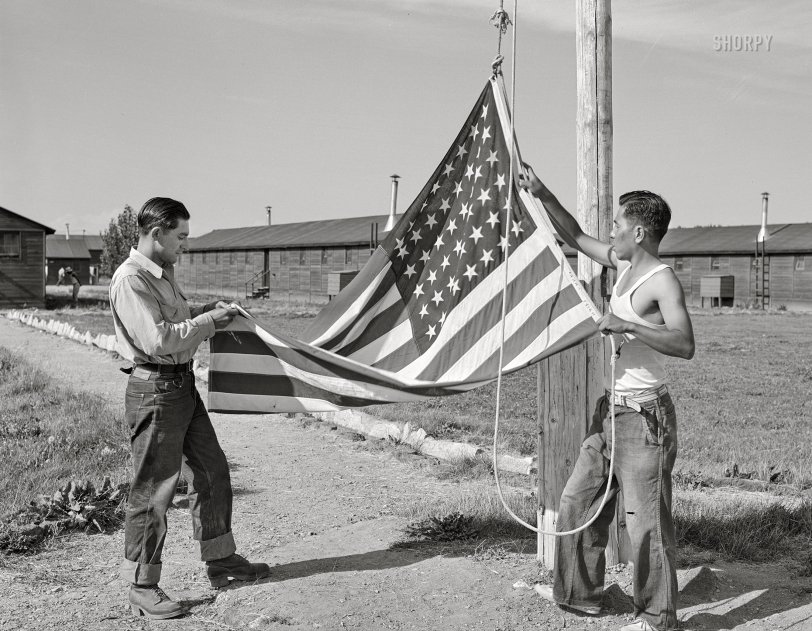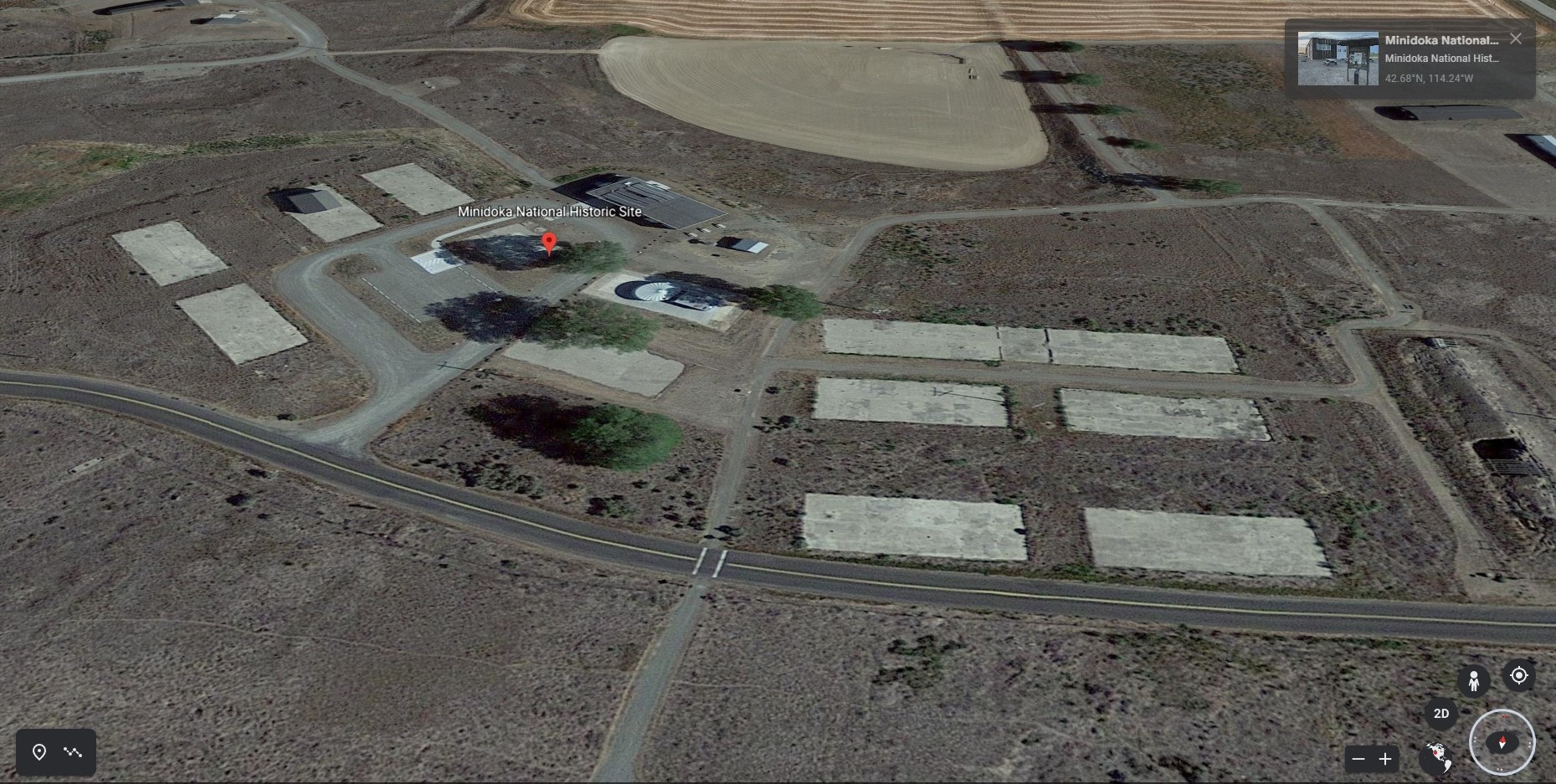


Framed or unframed, desk size to sofa size, printed by us in Arizona and Alabama since 2007. Explore now.
Shorpy is funded by you. Patreon contributors get an ad-free experience.
Learn more.

- Details, Details
- What's that building to the left of the tower?
- Coal Barges
- Bromo-Seltzer
- Inner harbor
- The Basin
- What a headache!
- Giant stepladder?
- Baldwin 62303
- Baldwin VO-1000
- Cold
- No expense spared
- Tough Guys
- Lost in Toyland
- And without gloves
- If I were a blindfolded time traveler
- Smoke Consumer Also Cooks
- Oh that stove!
- Possibly still there?
- What?!?
- $100 Reward
- Freeze Frame
- Texas Flyer wanted
- Just a Year Too Soon
- WWII -- Replacing men with women at the railroad crossing.
- Yes, Icing
- You kids drive me nuts!
- NOT An Easy Job
- I wonder
- Just add window boxes
Print Emporium
Home of the Brave: 1942

July 1942. "Rupert, Idaho. Former CCC camp now under FSA management. Japanese-Americans taking down their flag in the evening." Internees at the Minidoka War Relocation Center. Acetate negative by Russell Lee for the Farm Security Administration. View full size.
48
That 6x8 grid of stars is the one I grew up with.
What price freedom?
I find it sadly ironic that these men are honoring the flag of the country that imprisoned them. Did they do this of their own volition? Can you imagine prisoners in Nazi concentration camps doing this? At least they were fed better (hopefully) and didn't get worked to death.
[The relocation centers were not labor camps. Any work done by the internees was voluntary and for pay, generally outside of the camp, including construction of the Anderson Ranch Dam. - Dave]
Take the tour path
Here's what the Minidoka National Historic Site looks like today. The address is 1428 Hunt Road, Jerome, ID. It's a far cry from a West Coast city and there's nothing now to give you a feel for what it was like to be locked inside a barbed wire fence with armed guards in this remote location. Still, Google Street view rolled down the path inside the park. You can arrow around the camp and read the information signs along the way. That's how I found out the long earth mound to the far right in the photo was once a root cellar.
Click to embiggen
Patriotic Americans
Among the many things we should not forget is that, for its size, the most decorated unit in the history of the United States military is the 442nd Infantry Regiment, organized at the start of 1943, composed almost entirely of Nisei (American citizens of Japanese descent)--and all volunteers. Among their distinctions were 4,000 Purple Hearts, 21 Medals of Honor, and the Legion d'Honneur. One of the Nisei units helped to liberate the Dachau labor camps.
About 33,000 Japanese Americans served during World War II. Many of them had famiiy members being 'interned' or 'detained' or 'relocated' (whatever you call it, it was involuntary) back home.

























On Shorpy:
Today’s Top 5